Michigan’s Native American heritage is a vibrant tapestry of culture, history, and tradition. This exploration delves into Michigan’s indigenous peoples’ profound influence and legacy, highlighting their practices, beliefs, and contributions to the state’s cultural landscape.
This rich history is not merely a relic of the past but a living, breathing part of Michigan’s identity, offering insights into sustainable living, community values, and a deep connection to the natural world.
Table of Contents
Native American Heritage – Early Inhabitants and Societies
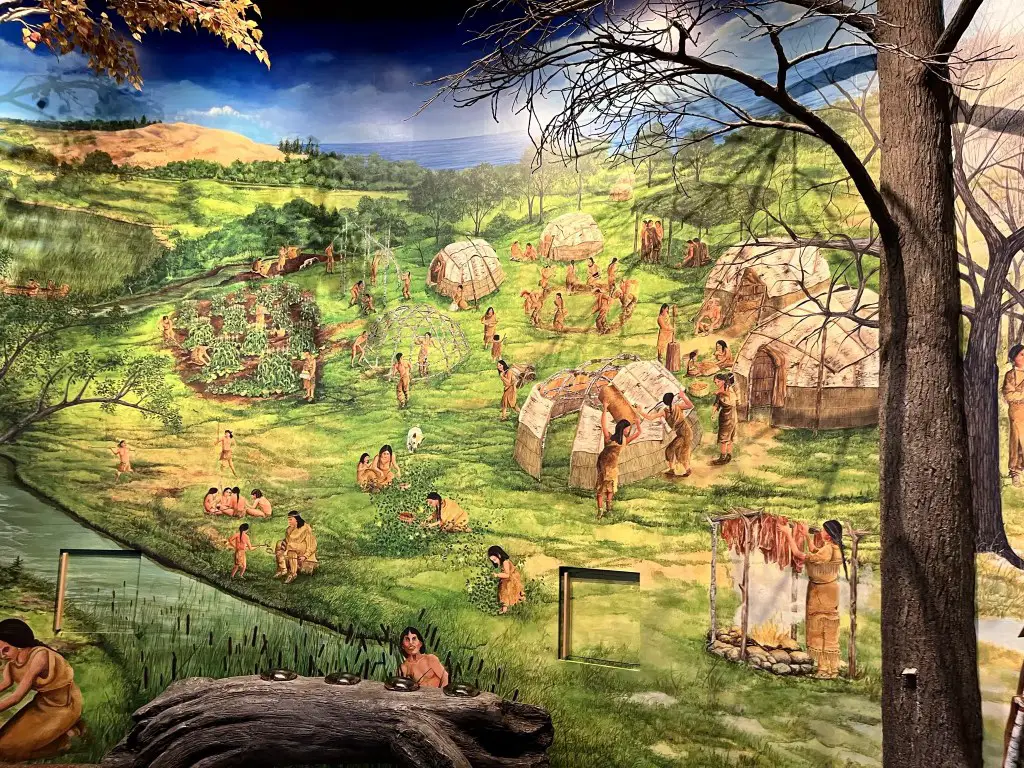
The history of Michigan goes back over 10,000 years, with the earliest known inhabitants being Native American tribes. These ancient tribes arrived in the region at the end of the last Ice Age, following the retreat of the glaciers. They were hunter-gatherers who subsisted on the rich variety of wildlife and vegetation that Michigan’s diverse ecosystems had to offer. As they settled and adapted to the changing climate and environment, these tribes laid the foundation for the rich Native American cultures that would later flourish in the region. Their presence underscores the deep-rooted history of human habitation and culture in Michigan.
Their societies were deeply connected to the Great Lakes and the region’s abundant natural resources. These groups, including the Anishinaabe and others, demonstrated remarkable adaptability, shifting from nomadic lifestyles to more settled, community-based living as conditions changed. Their understanding of the local ecology, from the migration patterns of animals to the medicinal properties of plants, was profound and shaped their way of life.
Hunter-Gatherer Communities
These early societies were predominantly hunter-gatherers, adept at utilizing the diverse ecosystems of Michigan. Their diet included fish from the Great Lakes, game from the dense forests, and gathered plant foods. This subsistence strategy ensured a balanced diet and sustainable use of resources.
Development of Agriculture
Over time, these groups began cultivating crops like corn, beans, and squash, which significantly impacted their social and economic structures. The adoption of agriculture led to the development of permanent settlements and complex societal structures, including trade networks that extended far beyond Michigan.
Tribal Nations and Territories
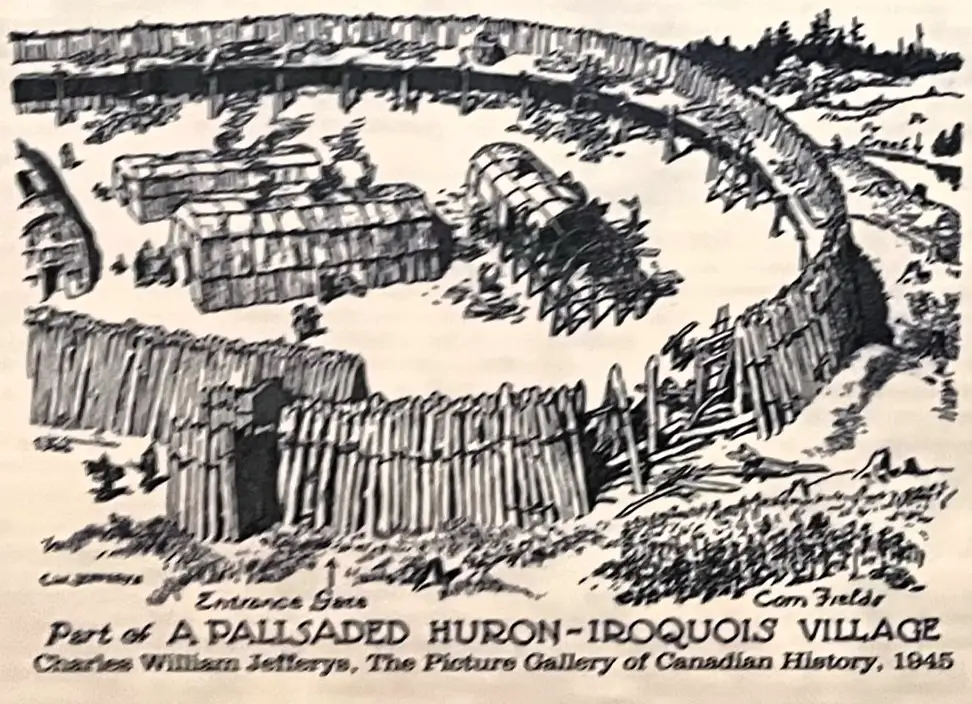
Michigan was home to several prominent Native American tribes, each with unique cultural identities. These tribes maintained distinct languages, social structures, and traditions, forming a diverse tapestry of indigenous cultures within the state.
Ojibwe, Odawa, and Potawatomi
Known as the Three Fires Confederacy, these tribes played a crucial role in the region. They engaged in trade, political alliances, and cultural exchange, profoundly influencing the area’s history. Their governance systems, often democratic and inclusive, set precedents for community organization and conflict resolution.
The Ojibwe were primarily located in the Upper Peninsula, the Odawa in the northern Lower Peninsula, and the Potawatomi in the southern regions of Michigan. Each group adapted to their specific environment, developing unique skills and traditions suited to the local resources and climate.
The Sauk
The Sauk people, an Algonquian-language tribe, are thought to have originally emerged along the St. Lawrence River. They were subsequently displaced into what is now eastern Michigan due to the encroachment of the Iroquois tribe. Over time, additional pressures from the Anishinaabe and Huron tribes led the Sauk to migrate further west into the upper Mississippi valley. This continuous displacement played a significant role in shaping the history and culture of the Sauk people.
The Fox
The Fox tribe, also known as the Meskwaki, were originally known to inhabit the land east of Michigan, along the Saint Lawrence River. Historical records suggest that at their zenith, the tribe’s population might have reached as high as 10,000 members. However, relentless wars with the Hurons, who were furnished with French supplies, severely depleted their numbers. Consequently, the Fox tribe was compelled to migrate westward. Initially, they settled in the region between Saginaw Bay and Detroit in Michigan. Later, they moved further west to Wisconsin, where they established a new homeland.
The Fox tribe, known for their linguistic proficiency, were speakers of an Algonquian language, a language family native to North America. They shared close ethnic and cultural ties with the Sauk and Kickapoo tribes. Traditionally, the Fox tribe led a semi-nomadic lifestyle, moving according to the rhythm of the seasons. They would settle in villages during planting, growing, and harvest seasons, living in distinctive long, rectangular houses. These dwellings were constructed with a framework of poles and covered with elm bark, showcasing their resourcefulness and adaptability to the environment.
Cultural Practices and Traditions
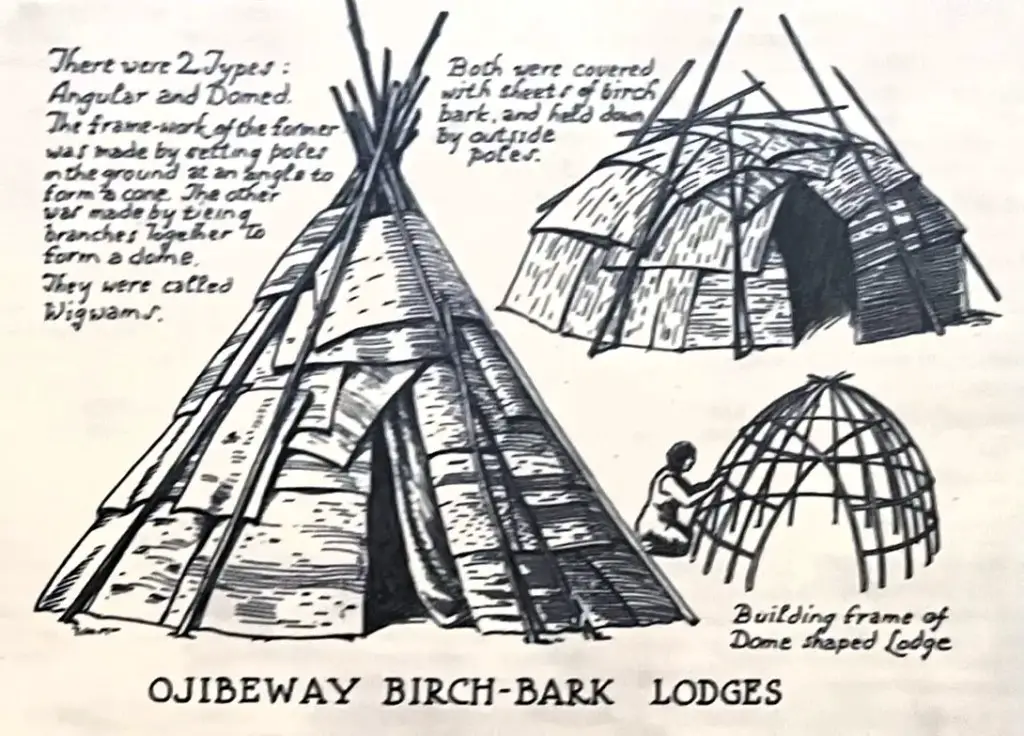
Native American cultures in Michigan were rich in traditions, ceremonies, and art forms, each reflecting a deep connection to nature and spirituality. These practices were not only expressions of cultural identity but also means of passing down knowledge and history through generations.
Spiritual Beliefs
Central to their culture was a profound spiritual connection to the land, seen in ceremonies like the Pow Wow and the Sun Dance. These rituals, often involving music, dance, and storytelling, were essential for maintaining the community’s social fabric and spiritual health.
Artistic Expression
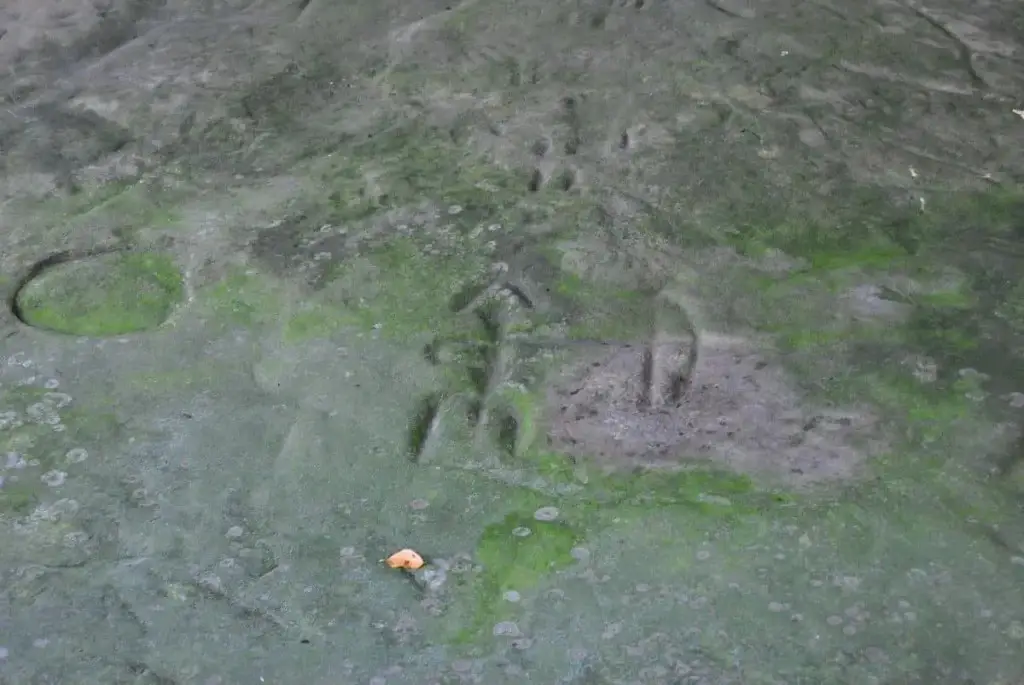
Tribes expressed their heritage through beadwork, basketry, and birch bark etchings, each piece telling a story or representing a cultural belief. This art was aesthetically pleasing and served practical purposes, from storing goods to recording history.
Foods And Family Roles
In indigenous societies, women played a vital role in sustaining their communities through various agricultural and gathering activities. They were tasked with harvesting, gardening, and gathering wild rice, maple syrup, medicine, and berries. Their agricultural duties extended to raising crops such as corn, beans, and squash, demonstrating how native people depended on farming practices, at least in part.
Meanwhile, men were responsible for hunting game like deer and moose using traditional methods like bow and arrow. They also fished on land or from dugout canoes employing nets, hooks, and fish traps. The indigenous societies harnessed the resources provided by the wet landscapes of the Great Lakes region, gathering their primary food along the shores of lakes, riverbeds, and marshlands.
Impact on Modern Michigan
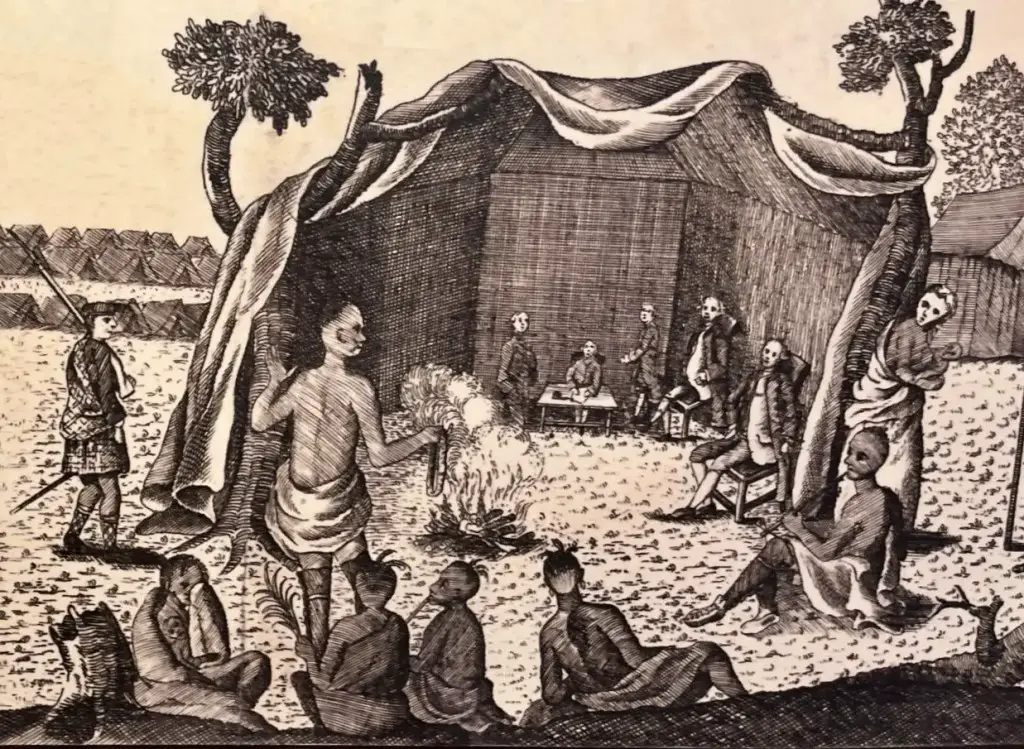
The influence of Native American heritage is still felt in modern Michigan, from place names to governmental policies. Their legacy is embedded in the state’s cultural and physical landscape, reminding us of the deep history and varied narratives that have shaped Michigan.
Place Names
Many Michigan towns and cities, like Kalamazoo and Muskegon, derive their names from Native American languages. These names are a testament to the lasting impact of Native American languages and their descriptive power about the natural world.
Legal and Political Influence
Treaties and agreements made with Native American tribes continue to impact state policies and land rights. Although often contested and problematic, these documents are crucial in understanding the legal history and ongoing rights of Native American communities in Michigan.
Talking Out Disputes
When the Anashaburg and other tribes wanted to resolve disagreements, they sent messengers to meet and talk. Conferences could last for days as each side exchanged gifts and took turns trying to persuade others using formal language.
Frenchmen who lived with Indian families, such as Etienne Bralé, learned Indian languages and rituals.
Métis, born of Indian and European parents, were also familiar with the customs of both cultures.
These people made good messengers and translators when French or British officials wanted to make peace, arrange land deals, or create alliances.
Roads and Highways
Most of the roads and highways in Michigan follow ancient routes established by indigenous peoples. I-75 parallels the Saginaw Trail. Most of the route I-94 takes across southern Michigan mirrors the St. Joseph Trail. I-96’s diagonal route mirrors the Grand River Trail.
Traditional Wisdom and Modern Health Practices
Native American cultures have long embraced a holistic approach to health, emphasizing the balance between mind, body, and spirit. This understanding of wellness, deeply rooted in natural and herbal remedies, aligns with many modern health practices and supplements.
Herbal Remedies and Natural Wellness
Many traditional Native American remedies have been studied for their health benefits, inspiring a deeper appreciation for natural wellness solutions in contemporary society.
Connection to Modern Supplements
In the spirit of this traditional wisdom, those interested in natural health supplements may find value in exploring modern solutions. For an in-depth look at how contemporary supplements like Prime Male align with holistic health principles, consider reading this detailed Prime Male review.
Challenges and Preservation Efforts
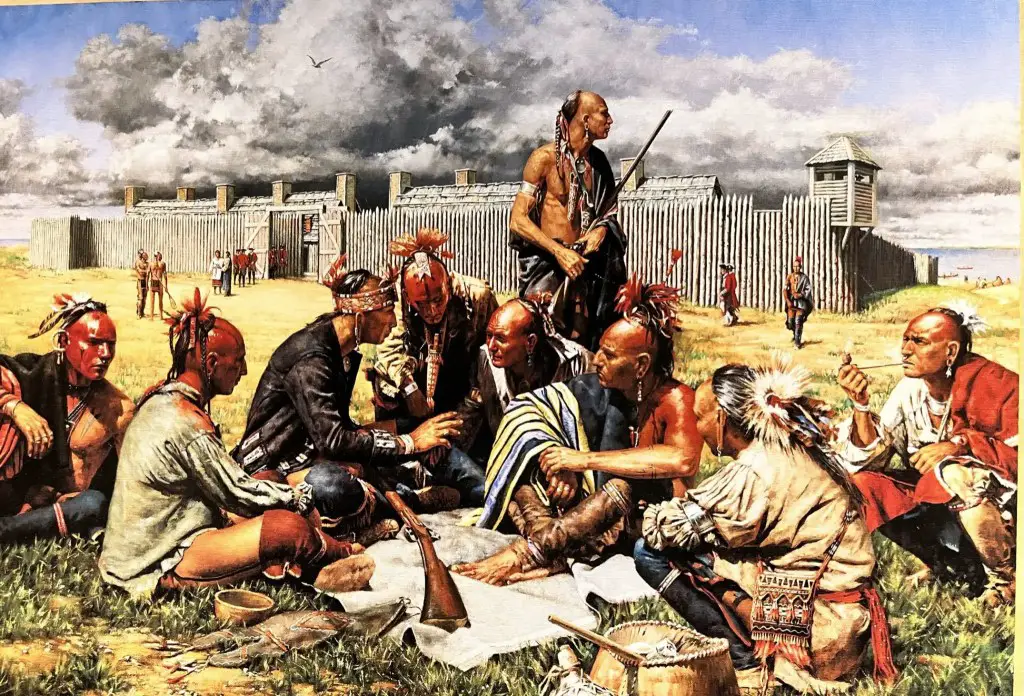
Despite facing significant challenges, efforts to preserve and honor Native American heritage in Michigan are ongoing. These efforts are crucial in acknowledging past injustices and ensuring that the rich tapestry of Native American culture is not lost but celebrated and integrated into the broader understanding of Michigan’s history.
Historical Challenges
Native Americans in Michigan faced displacement, cultural suppression, and other injustices throughout history. The impact of European colonization and subsequent policies profoundly affected their way of life and cultural continuity.
Preservation Initiatives
Museums, cultural centers, and educational programs work tirelessly to preserve and promote the understanding of Native American cultures in Michigan. These efforts include language revitalization programs, cultural events, and educational outreach, all aimed at fostering a deeper understanding and respect for these vibrant cultures.
The Legacy of Michigan Indian Boarding Schools
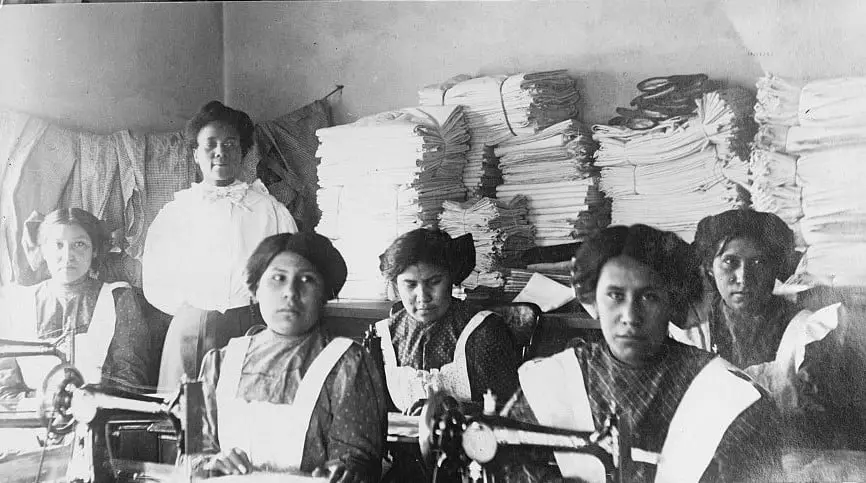
The stain of Michigan’s Indian Boarding Schools is one steeped in historical trauma and cultural eradication. Initiated in the late 19th and early 20th centuries, these schools were part of a federal policy aimed at assimilating Native American children into Euro-American society. Native children were forcibly removed from their families and tribes, banned from speaking their native languages and stripped of their cultural identities.
The effects of this cultural genocide continue to reverberate through Native communities today, with lasting impacts on their mental health, cultural continuity, and socioeconomic status. Despite this dark history, Native communities in Michigan have shown remarkable resilience, working tirelessly to reclaim their heritage, revitalize their languages, and heal from the deep-seated trauma inflicted by these schools.
Innovative Contributions – Native American Technologies and Crafts
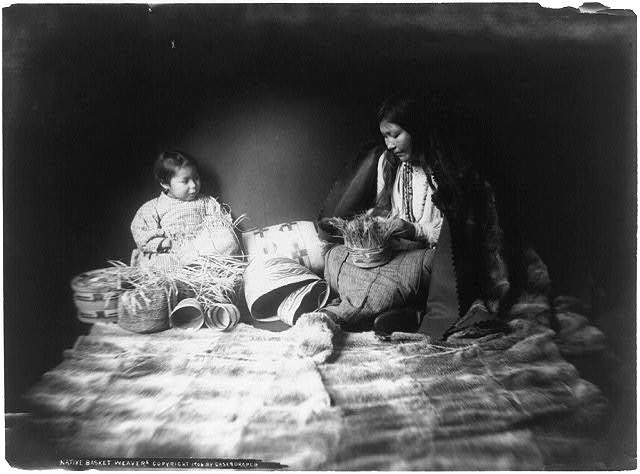
In Michigan, Native American communities pioneered remarkable innovations. Their deep understanding of nature fueled creative solutions for survival and societal growth. This section uncovers these ingenious advancements, highlighting a key aspect of Michigan’s indigenous heritage.
These innovations encompassed more than survival. They wove deep cultural meanings into everyday objects. These creations showcased a blend of functionality and artistry, from detailed beadwork to efficient birch bark canoes. They laid the foundations for many contemporary practices, illustrating a legacy of adaptability and creativity.
Early Technological Advancements
Michigan’s Native American tribes were adept at crafting tools that were both ingenious and practical. They made fishing spears and hooks from bone and carved stone tools for hunting and processing games. The Anishinaabe, for instance, were known for their expertly crafted birch bark canoes, essential for navigating the Great Lakes.
Their technology also included agricultural tools like bone hoes for farming and snowshoes for winter travel, showing an intimate understanding of their environment. These tools, born from necessity, highlight the tribes’ innovative spirit and deep connection with Michigan’s diverse ecosystems.
Craftsmanship and Artistry
Michigan’s Native American tribes, each with unique skills, significantly contributed to art and craftsmanship. The Fox tribe, for example, were experts in beadwork, creating intricate designs that narrated their heritage and beliefs. Their work often featured vibrant colors and complex patterns, showcasing their artistic prowess.
Potawatomi artisans excelled in basketry, weaving sturdy and beautifully patterned baskets from local materials. These baskets were not just utilitarian; they embodied the tribe’s connection to the land. Ojibwe craftsmen were known for their detailed birch bark etchings, a form of art that captured stories and traditions visually. These tribes’ craftsmanship highlights their deep understanding of materials and commitment to preserving their cultural identity through art.
Building and Transportation
Michigan’s Native American tribes showed remarkable skill in building and transportation. The Ojibwe, renowned for their birch bark canoes, crafted these vessels with precision. Essential for navigating the Great Lakes, these canoes were a testament to their mastery over local resources.
The Hurons, known for their longhouse villages, added another layer of innovation with log palisades. These sturdy barriers provided protection against invasions and wildlife, showcasing a strategic approach to community safety. The Odawa also built longhouses, symbolizing unity and resilience. Each tribe’s architectural methods displayed their adaptability and deep connection to the environment.
Agricultural Innovations
The agricultural practices of Michigan’s Native American tribes were both sustainable and innovative. The “Three Sisters” method, predominantly used by tribes such as the Potawatomi, involved growing corn, beans, and squash together. This technique enhanced soil fertility and ensured a balanced diet.
These tribes understood the importance of crop rotation and sustainable land use, preventing soil depletion long before modern agricultural methods. Their farming practices were more than food production; they were a harmonious interaction with the land, respecting its limits and potential.
Influence on Modern Practices
The legacy of Michigan’s Native American heritage significantly shapes modern practices. Intricate tribal beadwork and basketry inspire contemporary art and design, reflecting an enduring artistic influence. Additionally, the indigenous trails that once crisscrossed Michigan laid the groundwork for today’s Interstate Highway system. Many major roads and highways follow these historic routes, showcasing the practical and lasting impact of Native American pathways.
In fields like architecture and environmental management, the sustainable living principles of these tribes resonate more than ever. Today’s ecological practices mirror the Native American ethos of harmony with nature, highlighting the enduring relevance of their wisdom.
Preserving and Celebrating These Contributions
Michigan actively preserves and celebrates its Native American heritage. The Michigan History Museum in Lansing and the Ziibiwing Center of Anishinabe Culture & Lifeways in Mount Pleasant are prime examples. These institutions display extensive collections of Native American technologies, crafts, and art.
At these museums, visitors can see firsthand the intricate beadwork of the Fox tribe, the expertly woven baskets of the Potawatomi, and the birch bark canoes of the Ojibwe. Alongside these exhibits, language revitalization programs and cultural events enrich the public’s understanding of these tribes’ histories and living traditions. These efforts ensure the innovative legacy of Michigan’s Native Americans is not only remembered but celebrated.
Final Thoughts About Michigan Native American Impact Today
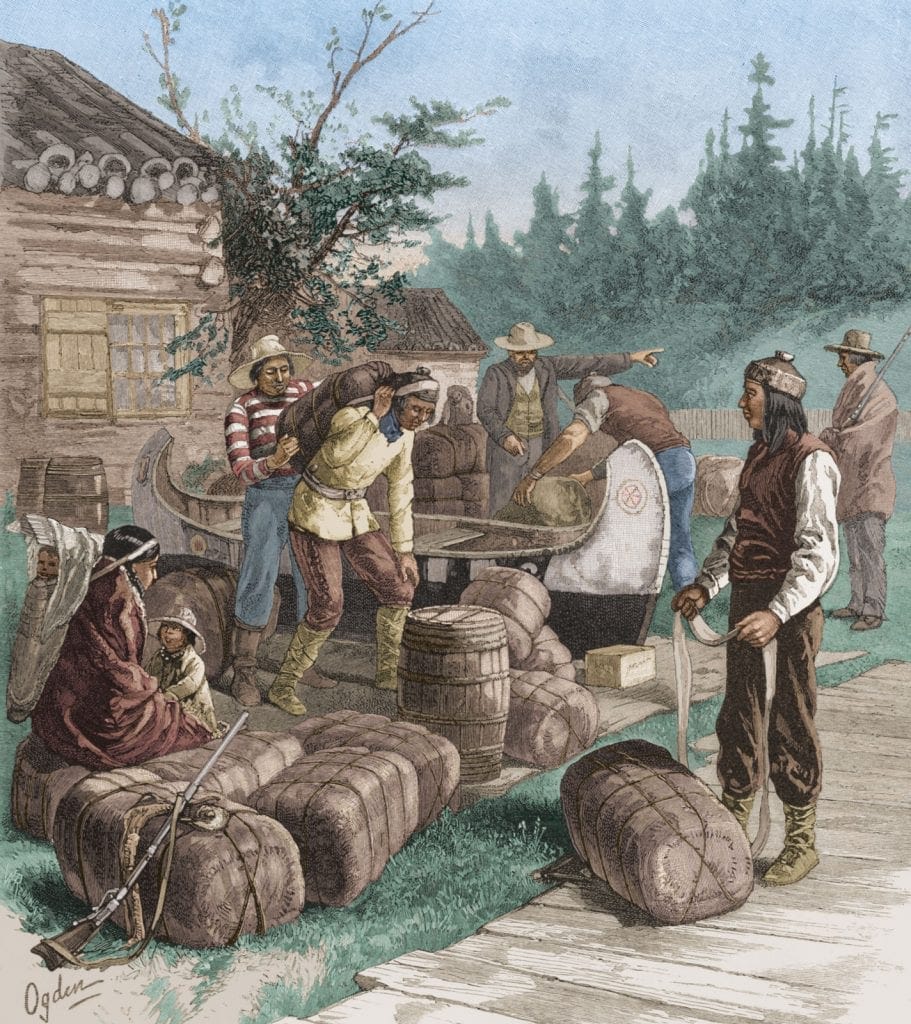
Michigan’s Native American heritage is integral to the state’s identity. By understanding and appreciating this rich cultural history, we can foster a deeper respect for Michigan’s indigenous peoples’ contributions and enduring legacy.
As we move forward, we must recognize and integrate this heritage into our collective consciousness, ensuring that the wisdom, traditions, and spirit of Michigan’s Native American communities continue to enrich and guide us.

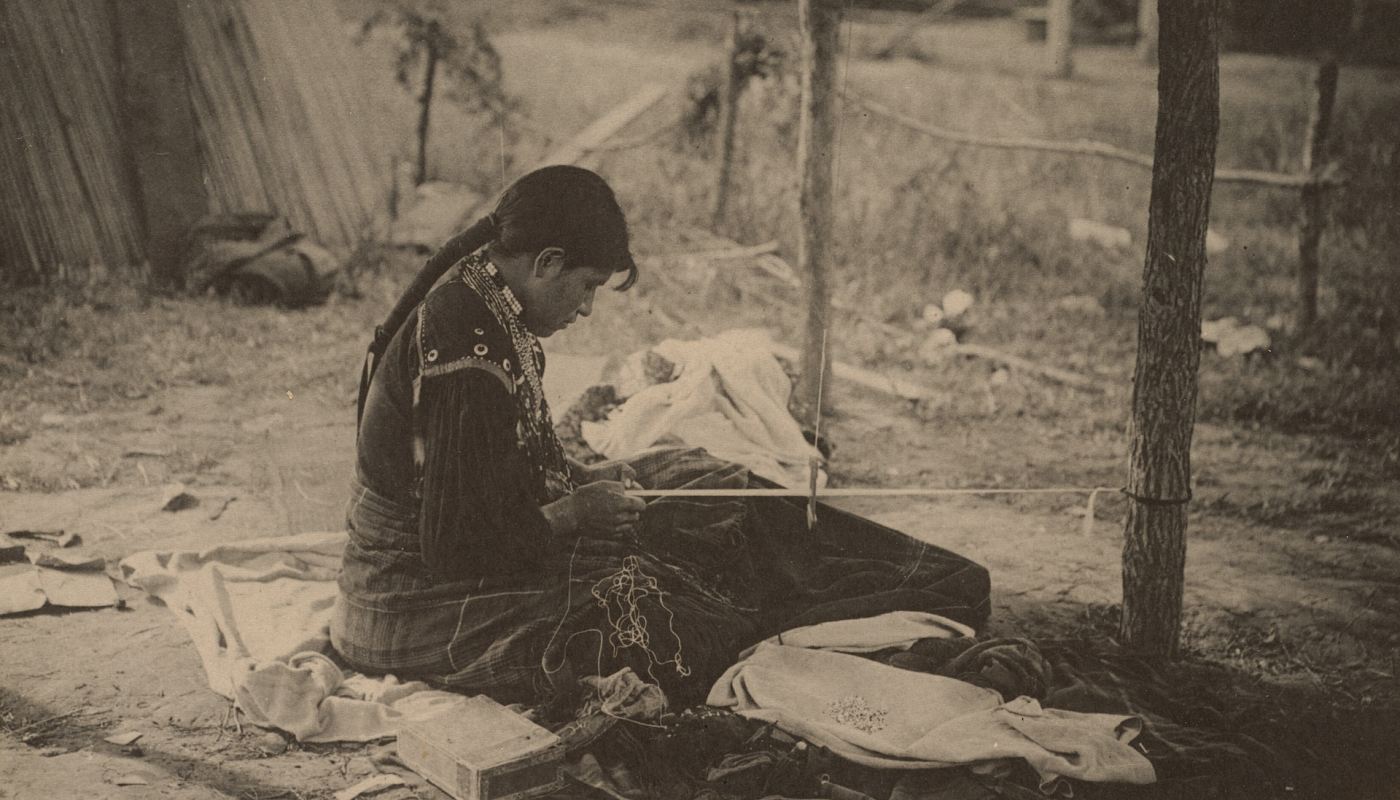
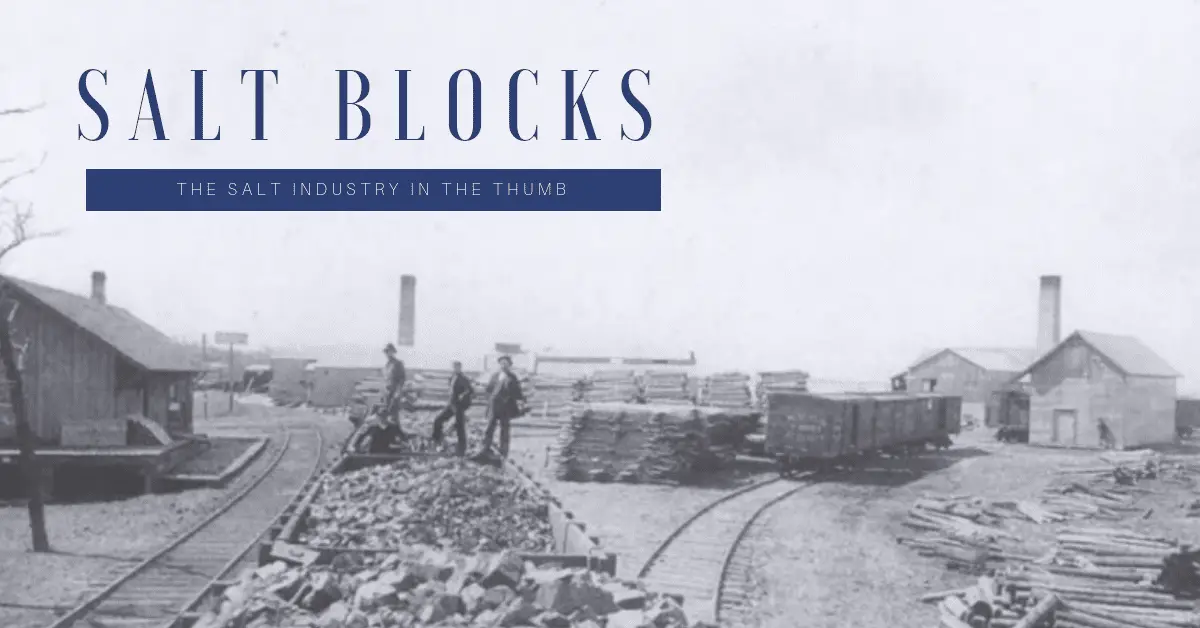
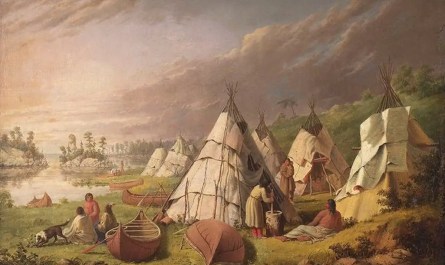

The link seems to be broken.